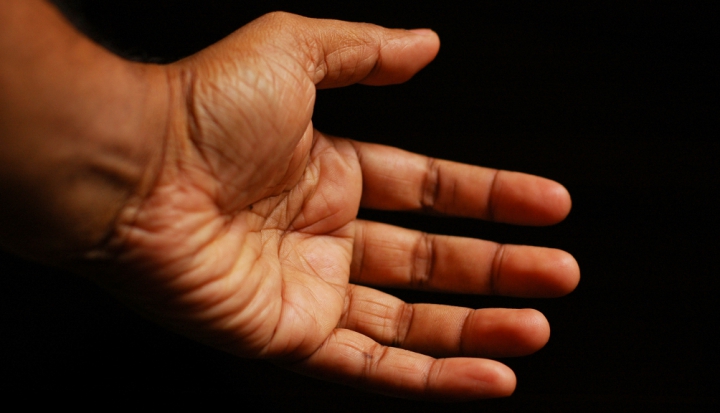Holding hands (or not) is less important than praying in a “commonly bodily posture,” as the body of Christ.
One of my first memories of Sunday Mass was my mother taking my hand when we joined in the Lord’s Prayer. As time went on and with the addition of three younger brothers, the family “Our Father” chain grew, expanding beyond our immediate household to the families that sat closest to us in church. Holding hands during the Lord’s Prayer was taken for granted in my years of high school youth ministry, and by the time I graduated from college, pretty much everyone held hands in my home parish.
My experience likely tracks that of many Catholics through the 1970s, ’80s, and ’90s, as the renewal of the liturgy after the Second Vatican Council took root in Catholic parishes. For some, holding hands during the Lord’s Prayer perhaps reflected the ethos of the “full, conscious, and active” participation in the liturgy promoted by the council’s bishops while also promoting the recovered communal dimension of the Mass. The spread of the practice was also likely influenced by the charismatic and retreat movements, with their hunger for richer emotional expression at Mass.
No priest or other authority that I can recall, however, encouraged this practice; indeed, the General Instruction of the Roman Missal is completely silent about it, indicating only that “all the faithful say the prayer with” the priest. An answer on the U.S. bishops’ website about the posture of the community during the prayer simply states, “No position is prescribed in the Roman Missal for an assembly gesture during the Lord’s Prayer.”
However, the General Instruction also encourages “a common bodily posture” as “a sign of the unity of the members of the Christian community.” In this light, holding hands during the Lord’s Prayer is an echo of the priest’s posture of raising and extending his hands during the prayer. This ancient way of praying, called orans, was the posture shared by the whole assembly during Mass. Holding hands during the Lord’s Prayer perhaps recovers this ancient tradition, with the whole assembly joining in a group orans; indeed, in some parishes, members of the assembly individually extend their hands as the presider does.
Given the principle in canon law that what is not forbidden by the law is generally permitted, as well as the fact that holding hands during the Lord’s Prayer has become a widespread custom, it certainly seems OK, even appropriate, to join hands as we pray the prayer that Jesus taught. One question worth asking, however, is simply: Why just the Lord’s Prayer? After all, though most of the prayers of the Mass are actually spoken by the presider, he is always praying the common prayer of the church in the name of the gathered assembly. Should we not also, then, be lifting our hands with him in a “common bodily posture” during other prayers as well?
This article appeared in the March 2014 issue of U.S. Catholic (Vol. 79, No. 3, page 46).
Have a question you’d like to get answered? Ask us at editors@uscatholic.org!
Image: rgbstock/leocub













Add comment